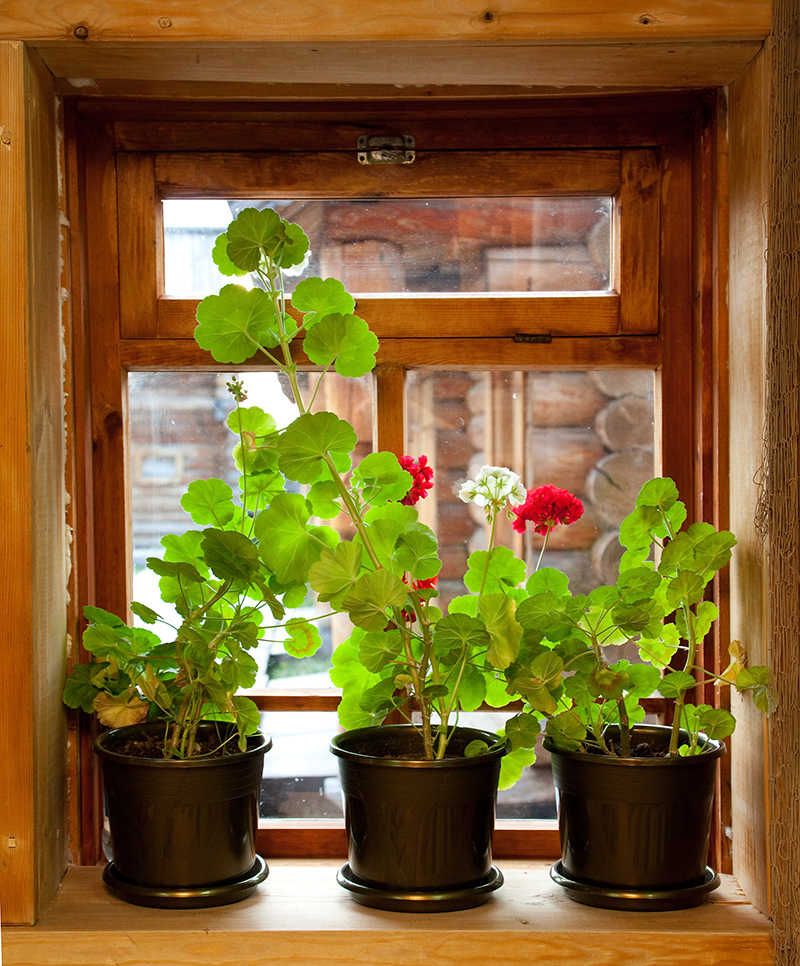Caring for Orchids: A Holistic Approach
Posted on 18/08/2025
Caring for Orchids: A Holistic Approach
Orchids are celebrated around the world for their stunning, exotic beauty and fascinating diversity. But, many aspiring gardeners feel intimidated when it comes to orchid care. The good news is, nurturing thriving, healthy orchids doesn't require a science degree or copious amounts of luck. By adopting a holistic approach to orchid care, anyone can enjoy vibrant blooms year-round. In this comprehensive guide, we'll cover everything you need to know about raising happy orchids, from basic care tips to advanced techniques and troubleshooting.
Understanding Orchids: Nature's Masterpieces
Orchids, members of the family Orchidaceae, are among the largest and most versatile of all plant families. There are estimated to be over 25,000 species and more than 100,000 hybrids. Their broad adaptability means orchids can be found in rainforests, deserts, mountains, and even on rocky outcrops. Although all orchids share some basic care needs, understanding their natural habitat provides the wisdom needed for successful cultivation.
The Benefits of a Holistic Orchid Care Approach
- Enhances plant resilience by addressing both physical and environmental needs
- Reduces pests and diseases without reliance on harsh chemicals
- Fosters continuous blooming and healthy foliage
- Promotes sustainable, stress-free plant parenting

Key Elements of Successful Orchid Care
Caring for orchids can seem complex, but by focusing on a few essential elements, you can provide optimal conditions for any variety.
1. The Right Light
Light is arguably the most critical factor in orchid care. Most orchids prefer bright, indirect sunlight, mimicking the dappled light found beneath forest canopies. Too much direct sunlight can scorch the leaves, while too little will cause weak growth and few flowers.
- Phalaenopsis (Moth Orchids): Thrive in east or west-facing windows with filtered light.
- Cattleya: Enjoy stronger light; south-facing exposure can work with sheer curtains.
- Dendrobium: Prefer bright, filtered daylight for robust flowering.
Tip: If your orchid's leaves are dark green and floppy, it may need more light. Yellowing or reddish leaves indicate excess sunlight.
2. Proper Watering Techniques
Overwatering and underwatering are leading causes of orchid distress. Unlike many houseplants, orchids don't like to sit in waterlogged soil. In their natural settings, many orchids are epiphytes, growing on trees with their roots exposed to air and humidity rather than dirt.
- Water approximately once a week in the warm months and every 10-14 days during cooler periods.
- Always let the potting mix dry out slightly between waterings.
- Use room-temperature water and avoid splashing the leaves and crown.
- Ensure pots have excellent drainage holes.
Pro Tip: Stick your finger or a pencil into the potting mix; if it feels dry an inch down, it's time to water.
3. Balanced Nutrition
Orchids, like all plants, require nutrients to grow and bloom.
- Use a balanced orchid fertilizer (such as 20-20-20) or one formulated for blooming plants.
- Feed every 2-4 weeks in the active growing season.
- Flush the pot with plain water monthly to prevent fertilizer salt buildup, which can burn delicate orchid roots.
- Reduce feeding in winter or during dormancy.
4. Humidity and Airflow
Most orchids thrive in humidity levels of 40-70%. Dry air can hinder growth and flower production. At the same time, good air movement prevents fungal and bacterial problems.
- Use a humidity tray or mist plants regularly, especially in heated homes.
- Run a small fan on low near your orchids to mimic their natural breeze.
- Group plants together to raise the ambient humidity.
5. Temperature Insights
Temperature plays a role in orchid blooming cycles. Most household temperatures suit the common types, but a gentle temperature drop at night often encourages flower spikes.
- Phalaenopsis: 65-75?F (18-24?C) day; 60-65?F (16-18?C) night
- Cattleya: 70-85?F (21-29?C) day; 55-60?F (13-16?C) night
- Dendrobium: 65-85?F (18-29?C) day; 55-65?F (13-18?C) night
Note: Sudden drafts or temperature swings can shock your orchid, leading to bud drop.
6. The Right Pot and Potting Mix
Orchids don't grow in regular soil. Most need specialized mixes made of bark, sphagnum moss, perlite, or coconut fiber that allow roots to breathe and drain quickly.
- Repot every 1-3 years, or if the medium breaks down and retains too much moisture.
- Choose transparent or slotted orchid pots to allow you to monitor root health and maximize airflow.
- Never force roots into a crowded space; healthy roots should fit comfortably.
Holistic Orchid Care: Beyond the Basics
True holistic care for orchids involves not just meeting their survival needs but helping them flourish as a part of your living environment. Explore these advanced strategies for robust, resilient plants.
Monitoring Orchid Health
- Observe your orchid regularly for early signs of stress, disease, or pests. Yellowing leaves, shriveling pseudobulbs, limp or mushy roots, and leaf spots all warrant immediate attention.
- Isolate new orchids for 2-3 weeks to prevent pest or disease outbreaks.
- Keep leaves clean by wiping gently with a damp cloth to remove dust and pests.
Natural Pest and Disease Management
- Maintain optimal care to boost natural resistance.
- Address mealybugs and scale with cotton swabs dipped in isopropyl alcohol.
- Use insecticidal soap for minor infestations -- always test on a small area first.
- Improve air movement and avoid overhead watering to reduce fungal risks.
Eco-Friendly and Organic Approaches
- Consider companions like ferns, bromeliads, or moss to increase humidity and biodiversity around your orchids.
- Use organic fertilizers such as fish emulsion or worm castings for gentle, slow-release nutrients.
- Regularly compost old orchid media to maintain a sustainable garden.
Supporting Orchids Throughout Their Life Cycle
Different times in the orchid's life require different care strategies. Understanding these variations will help you take a well-rounded or holistic approach to orchid care:
- Acclimation: When bringing home a new orchid, allow it to adjust gradually to its new environment, especially light and humidity.
- Active Growth: Increase water, nutrients, and watch for emerging roots or spikes.
- Blooming: Support flower production with optimal light and stable temperatures. Stake flower spikes as needed to prevent bending.
- Resting/Dormancy: Many orchids, like Dendrobiums, rest after blooming. Reduce watering and feeding until new growth appears.
- Repotting and Dividing: Best done after blooming, this revitalizes the plant and encourages further growth.
Common Orchid Care Challenges -- and How to Overcome Them
Leaf Problems
- Wrinkled or shriveled leaves: Often indicate dehydration or root loss. Check the roots for rot and adjust watering.
- Yellow leaves: Sometimes natural (old leaf drop), but sudden widespread yellowing can signal root rot, overwatering, or low light.
No Blooms or Flower Drop
- Insufficient light is the most common cause. Gradually move your plant to a brighter location.
- Phalaenopsis especially need a cool night period to trigger blooming -- set by a window or slightly lower the thermostat.
- Bud blast (dropped buds) can result from sudden temperature changes or dry air. Improve humidity and stabilize the environment.
Root Rot
- Symptoms: Mushy, blackened roots; foul odor.
- Repot immediately, trim away all affected tissue with sterile scissors, and adjust watering habits.
Top Tips for Year-Round Orchid Health
- Prioritize consistency -- orchids thrive on routine.
- Keep a care journal for watering, feeding, and observations.
- Rotate plants for even light exposure.
- Incorporate seasonal adjustments for temperature, watering, and feeding.
- Share the beauty -- propagate and gift keikis (baby orchids) to friends!
Frequently Asked Questions About Holistic Orchid Care
How do I know if my orchid needs repotting?
If roots are growing out of the pot in abundance, the potting mix smells musty, or the plant is unstable, it's time to repot.
Can I use tap water for my orchids?
Most orchids tolerate tap water, but avoid softened or heavily chlorinated water. Let water sit out overnight or use distilled/rainwater if possible.
Should I cut off old flower spikes?
Phalaenopsis often rebloom from old spikes; trim just above a node after flowering. For most other orchids, remove spent spikes entirely to conserve energy for new growth.
How can I encourage more blooms?
Provide ample filtered light, ensure a slight night-drop in temperature, feed regularly, and avoid stress from over- or under-watering.

Conclusion: The Joy of Caring for Orchids Holistically
Caring holistically for orchids means treating these remarkable plants as dynamic, living beings that respond to their whole environment. By observing their natural rhythms, meeting their unique needs, and employing eco-friendly strategies, you'll enjoy not only more frequent blooms but also the profound satisfaction that comes from a deeper connection with nature.
Every orchid grower faces challenges, but with patience and understanding, your efforts will be richly rewarded. Whether you grow a single Phalaenopsis in a sunny kitchen window or curate a diverse cloud forest on your patio, the art of orchid care is a lifelong journey. Embrace the adventure, and watch your living jewels thrive!
Related Resources for Orchid Enthusiasts
- American Orchid Society: Culture Sheets
- Royal Horticultural Society - Orchid Care Guides
- Orchid Board Community Forums
Get hands-on with your orchids today, and discover the unique joy that comes from a truly holistic care approach!
Latest Posts
A Resident's Review: Flower Delivery Experience in [POSTCODE]
Case Study: Transforming a [BOROUGH/NEIGHBOURHOOD] Business with Flowers
Achieve Extended Poinsettia Liveliness This Year





